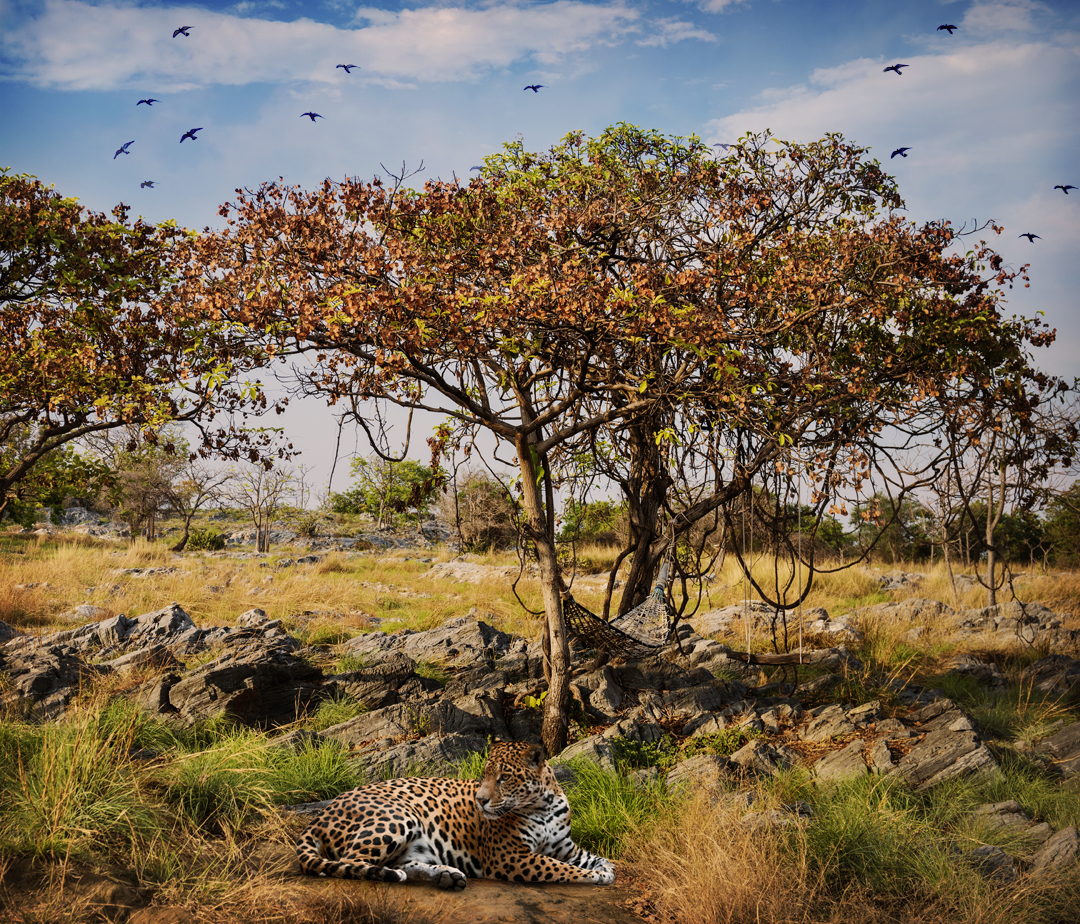Bandhavgarh National Park’s Journey

The name of this wild park “Bandhavgarh” came from two different Hindi words: Bandhav and Garh, where the meaning of the word Bandhav means brother and the second word is Garh which means fort. This fort is named this because it is written in ancient Hindu texts that this fort was given to Brother Lakshman by Lord Ram, one of the most revered Hindu God-incarnates. It is also believed that Lord Ram, gave this fort to Laksham to keep watch on Lanka. Elaborations also tell that the Monkey-god Hanuman and his followers raised the high cliff walls of this Fort to make it impossible to enter.
While roaming inside the fort, you can see several man-made caves with inscriptions and rock paintings, these have made archaeologists believe that this fort dates back to pre-Christ times if not pre-historic. The local rulers were based in this fort before 1617 A.D. After that, the Baghels (rulers) decided to shift their capital to Rewa and the fort gradually became less and less inhabited and the villages around the fort also started moving to other areas. Bandhavgarh National Park gradually became desolate and the forest took over which helped the Tiger and other wildlife establish themselves in the area.
The ownership of the fort was still with the Maharajas of Rewa. After moving to the Rewa, he declared the area of Bandhavgarh as their private hunting game reserve with only the Royal family having the right to hunt the Tiger. They also called this place “Shikargaah”. The fort and the area around it were passionately protected by the Royal Family who had the hunting rights in the area. However, after independence, the princely states were abolished, and the forest in the area started degrading due to a lack of proper control.
The state of Madhya Pradesh was formed in 1956 and they realised the importance of this area. Maharaja Martand Singh of Rewa was deeply moved by the degradation of forests at that time, and as a result, he suggested protecting an area of 105 sq. km. That protected area of 105 sq. km. was notified as a national park in 1968. After that, the poaching was controlled in the area and wildlife began to rise. As a result, small dams were also built to address the water shortage, and the local cattle were forbidden from grazing. The Tala Range was notified as a national park in 1968 but because of the growing population of tigers and other wildlife, the park was extended to 448.842 sq. km. in 1982. Three more ranges namely, Khitauli, Magdhi, and Kallawah were added to the national park area.
This Bandhavgarh National Park was included in Project Tiger in 1993 and the territory was later expanded to a tiger reserve and encompass a core area of 694.689 sq. km. and a buffer area of 437 sq km.
| Flora of the Scenic Bandhavgarh | Fauna of the Wild Bandhavgarh |
|---|---|
| Bandhavgarh National Park is spread across an area of 446 sq km and that area mostly consists of tropical and moist deciduous forests. The vegetation of this forest is mainly filled with Sal trees in the valley, while bamboo trees line the lower slopes. The major flora comprises these two trees and they cover the entire plain region of the forest. However, the upper areas or you can say higher hills and grasslands have mixed forest due to differences in soil characteristics. | The main reason for the popularity of Bandhavgarh National Park is the high density of tigers. This wild park has nearly 60 tigers in the 450 sq. km. area. Furthermore, this is the only area where white tigers can be seen. The last known white tiger was ‘Mohan’ who was captured by the Maharaja Martand Singh back in 1951. That one can be seen on display at the museum. Apart from tigers, Bandhavgarh National Park fauna includes over 47 kinds of mammals, more than 250 species of birds, more than 100 species of butterflies, and many reptiles also call this park home. |
| 50 aquatic plant species, 600 flowering plant species, and 18 plant species apart from several trees, shrubs, and herbs can be found in the core area and buffer area of Bandhavgarh National Park which offers nutrition to birds and other herbivores. | Major fauna of Bandhavgarh National Park includes white tigers, tigers, leopards, Indian Bison (Gaur), elephant, Sambar Deer, Spotted Deer, Wild Boars, Sloth Bears, Indian Wolf, Striped Hyena, Indian Fox, Peafowl, Indian Roller, Black Drongo, Lesser Adjutant, Crested Serpent Eagle, Malabar Pied Hornbill, White-throated Kingfisher, Indian Python, Spectacled Cobra, Monitor Lizard, Lime butterfly, Common Rose, Gaudy Baron, and Ratel, etc. |
| Bandhavgarh National Park flora includes Saj (Terminalia Tormentosa), Mahua (Madhuca indica), Arjun (Terminalia arjuna), Amla (Emblica officinalis), Palas (Butea monosperma), Salai (Boswellia serrata), Bhirra (Chloroxylon sweitenia), Gamar (Gmelina arborea), Wild luck (Flemingia bracteate), Hairy gomphrena (Acrocephalus indices), Haldu (Adina cardi folia), Dhaora/Dhavda (Anogeissus latifolia), Tendu (Diospyros Melanoxylon), Baheda(Terminalia bellerica), Van Tambakhu (Elephantopusscaber), Kans(Saccharum spontaneum), Indian Gooesgrsass (Eleusine indica), Dhaman (Grewia Tilifolia), Mango (Mangifera indica), Jamun (Syzygiumcumini), Lendia (Lagerstroemia parviflora), Red grass (Themedatriandra, Themeda quadrivalvis), Dubia grass (Crysopogonmontanus), Poledi (Apludamutiuca), Tall reed grass (Phragmites Karka), and Khas (Chrysopogonzizanioides), etc. | Other species that can be seen inside Bandhavgarh National Park include Barking deer or Muntjac, Chousingha or Four-horned antelope, Nilgai or Blue bull, Indian Gazelle or Chinkara, Wild dog or Dhole, Jackal, Common langur, Rhesus monkey, Red Jungle Fowl, Grey Hornbill, Common Teal, Red wattle Lapwing, Lesser Adjutant Stork, Long-billed Vulture, Red Headed Vulture, Oriental White-backed Vulture, Egyptian Vulture, Stork-billed kingfisher, Sirkeer Malkoha, Mottled wood owl, Osprey, Eurasian sparrow Hawk, Cinnamon Bittern, Barbets, Crimson Rose, Yellow Orange-tip, Indian Cupid, Striped Tiger, Plain Tiger, Common Jezebel, Daniad Egg fly, Common Evening Brown, Common Tree Brown, Tawny Rajah, Black Rajah, Indian Skipper, Flying Squirrels, and Fishing Cat etc. |
